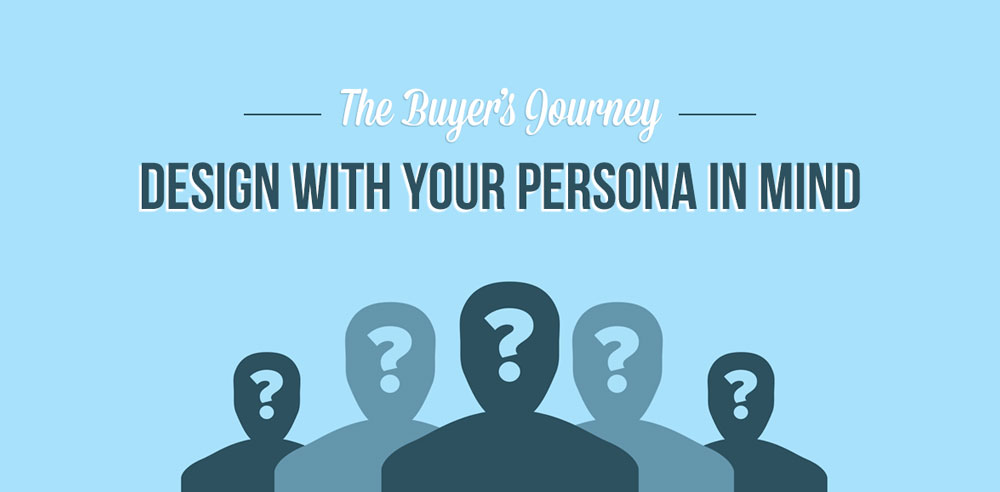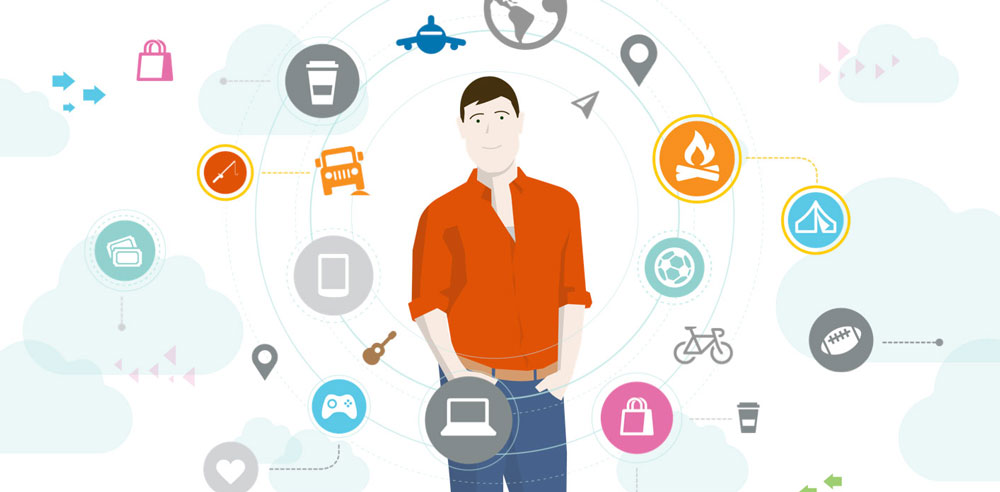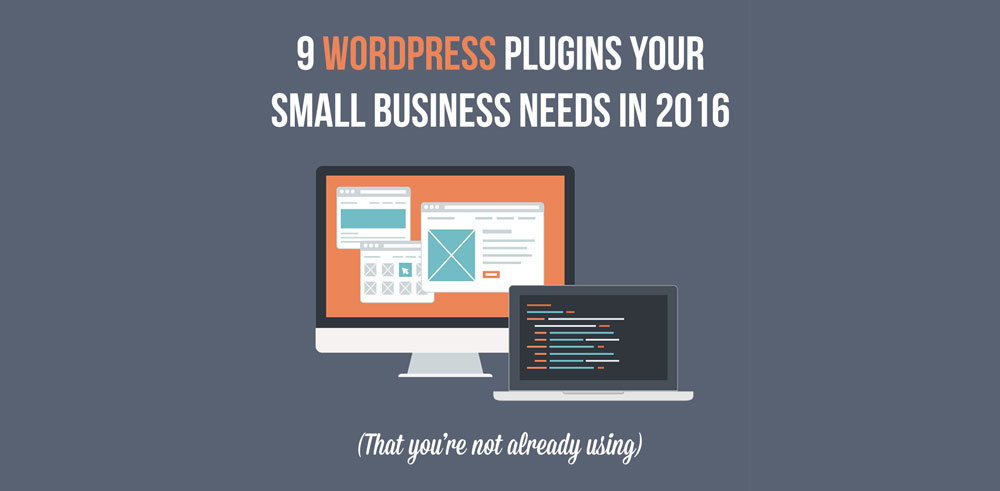Conversions are the single most important metric marketers can use to judge the success of their advertising efforts. No matter which tactics generate the most leads, conversion tracking, advanced conversion funneling techniques, and CRO are ultimately the factors that decide the fate of your business. That’s why marketers are also burdened with the task of optimizing the post-ad experience with landing pages, email marketing, remarketing and more.
However, when marketing teams create those assets, they often overlook the psychology of a prospect’s search and the position of potential clients.
- What are their needs?
- What’s their emotional state?
- What are their general fears and misconceptions about your business?
Understanding this aspect of a lead’s buying cycle can give us the critical information to successfully capture the site visitor and nurture them to become a client. This is also why a live chat tool can be a game changer. Using the inherent advantages of a chat to update your landing pages, PPC campaigns, and provide an easy way for your site visitors to connect is an often overlooked conversion tool today’s websites need. This article explores the buying cycle as it pertains to capturing a conversion using chat.
Let’s walk through the online buying experience as if we’re a buyer named Bob. Throughout this article we’ll hear Bob’s internal dialog as he’s making a key buying decision. This will help us all remember how to align our buyer journey to the thoughts, emotions and circumstances of our buyers. Think of this as an in-depth buyer persona or user story that will help us design our buyer journey.
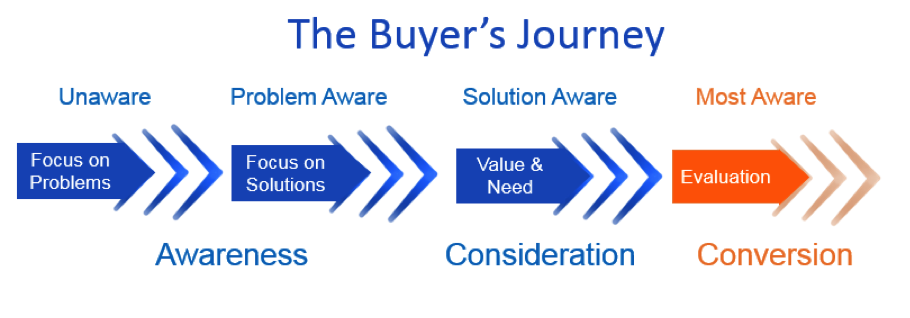
Phase 1: Awareness
Bob is a typical online searcher. He’s been thinking about this problem, talked to friends, and is ready to explore his options. There are direct needs, as well as direct pain points. Our job as marketers is to capture the pain and offer the solution. Here’s what is running through Bob’s mind.
I’m really struggling to manage my ad campaigns at work. I’ve been frustrated with this for a while. I’ve spent my evenings thinking about it and talking to friends but I haven’t had a chance to do anything about it yet. Today, however, I’m going to embark on what I hope is a painless and quick process to find the best ad management software. I realized that I simply couldn’t keep up, and my lack of knowledge in the industry kept me from getting the results I’ve always wanted. It’s a huge pain point now, as time and money that is wasted creates stress. I’ve avoided searching because the process to find what I’m looking for can be tricky, and it will require me to dig through lots of information and eventually trust a company to understand my needs.
As marketers and advertisers, it’s important to really feel the pain that Bob’s experiencing at this moment. It’s also key to realize that he’s already been talking with friends and family about how to solve his ad management problem. Armed with this knowledge, how do you change your messaging, landing page design or ad copy?
Phase 2: Consideration
The search begins! Bob knows this process is going to take some time. With all the different offers, pricing and set up that are part of implementing a new software product Bob knows he has a lot of research in front of him.
I’ve brewed my tea and set aside 30 minutes to start searching for the right tool. I’m not even certain how to type in what I want, so I try different variations of my search. A lot of information comes up, including blogs and glaring ads. I read the blogs and forums first, and get exposed to what people have found for themselves. I slowly start making a short list in my mind. The information is overwhelming. I have to compare a lot of different solutions with different feature sets. I quickly visit a short list of websites and make basic evaluations about their presentation and offers. I’m done for the today, but I know I need to come back later and do deeper research.
During the consideration phase of the buyer journey your prospects have probably visited your website, but they’ve seen a lot of other websites, too. Given this experience, how do you stand out from the competition? What are your prospects and leads reading about you that’s not on your website? How will the forums, blogs and competitor websites impact their evaluation of your company?
Phase 3: Shortlist & Review
Let’s say that your savvy messaging and website experience has worked. Bob has you on his shortlist. He’s almost ready to make the dive, but previous experiences and mistrust can still add friction to Bob’s buying experience with you. Bob might not want to directly communicate with you and give up his personal information. FAQs and blog posts typically serve to address this issue. This is, however, a time that some quick, painless interaction with the client can be the difference between a potential new customer and being crossed off the shortlist.
A million different things come at me on a daily basis. Paying rent, getting my car inspected, ordering new supplies for my business, and grocery shopping. My mind is always competing for what is worth my time. At the back of my mind, however, I’m still trying to solve my issue with my ad campaigns. As I’m browsing a news site to relax and clear my mind, I see an ad come up for a tool on my shortlist. Oh fine, it’s probably time I make a final decision about that afterall. I’m still a bit weary. I’ve been pulled into tricky free trials and demos before only to get charged once they expired. I don’t feel comfortable giving my email to just any company either. My phone and email are constantly getting spam already. I just have a few qualifying questions I’d love to get answered before I make a decision.
It’s clear Bob has interest. At this point in his journey, however, he still has questions. Are you making every channel available to Bob? Have you created high-touch and low-touch options for him to connect with your business? If your buyer persona dislikes the phone, consider adding live chat software to your website for a less time-intensive way to connect.
Phase 4: Action & Conversion
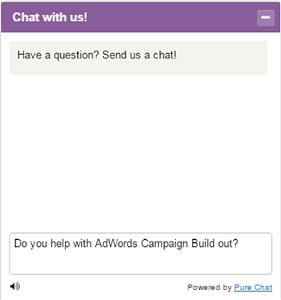 Capturing that lead, nurturing it, and providing it value from the first interaction is absolutely required to win the conversion game. The client has every right to ignore you, mistrust you and put their needs first. This is where real-time interaction helps tremendously. Kissmetrics highlights this importance: “44% of online consumers say that having questions answered by a live person while in the middle of an online purchase is one of the most important features a website can offer.” For the number of consumers on the fence about a product/service, this connection is crucial. The purpose is to quell the fears or supplant the confusion that the buyer has. Helpfulness equates to trust in this scenario, and the higher the trust level, the better your conversion rate will be.
Capturing that lead, nurturing it, and providing it value from the first interaction is absolutely required to win the conversion game. The client has every right to ignore you, mistrust you and put their needs first. This is where real-time interaction helps tremendously. Kissmetrics highlights this importance: “44% of online consumers say that having questions answered by a live person while in the middle of an online purchase is one of the most important features a website can offer.” For the number of consumers on the fence about a product/service, this connection is crucial. The purpose is to quell the fears or supplant the confusion that the buyer has. Helpfulness equates to trust in this scenario, and the higher the trust level, the better your conversion rate will be.
As I land on the page and start surfing, a chat box opens up. Typically, I don’t chat on a site, but in this case it seems like the furthest degree away from the company. It’s also a unique opportunity to feel out how the rep handles my questions and also how quickly. I decide this chat session can serve as a sample of what kind of organization I might potentially work with. If the process goes well, I’ll take the dive in. It’s been weeks since I started searching and I need to make a decision! All I want to do is solve this and move on.
And there we go, that didn’t take much time at all! The interaction went well, my questions got answered, and I feel really good about my decision point. I take the dive and sign up for a free trial. I might still send some quick emails to this company’s competitors to see how they compare to my main choice; but, at this point, I think I’ve made my decision.
Follow-Up: Conversion Optimization
You’re on your way! But, there are still more things to do in which you can help yourself and your site. Use data from your customers to your advantage. Look back on prior conversations; think about the questions you’ve received from your visitors. Is there a recurring theme in this area? In other words, is there a hole on your website that can give more information than it currently shows? If there are multiple inquiries about pricing, for example, there is an opportunity to improve your site to address these questions before they reach you. Use the data collected from live chat to bolster multiple areas on your site. Chances are, there will be returning visitors/buyers (63% were more likely to return to a website that offers live chat). When they notice that you’ve been listening, it is much easier to retain these customers.
So, conversion right? It has been highlighted a lot, but this is the backbone of a business. No conversion = no customers. Business owners all over are feverishly doing what they can do increase that percentage by any amount they can get. There are multiple ways in doing so too. Forms, quick call buttons, and other information grabs are all great methods. They work for some businesses and the types of clients they serve. But, for some markets and clients, live chat software is the winner. While there are other decent techniques to use, too many of them still require a waiting period. In business, time is money. A delay of any sort isn’t an option sometimes. Live means now, which is when your customer wants the answer. And in this case, you were there. You solved the problem, and did so right away. You captured that lead, while someone else only received their email address. And now, that customer is ready to purchase.

